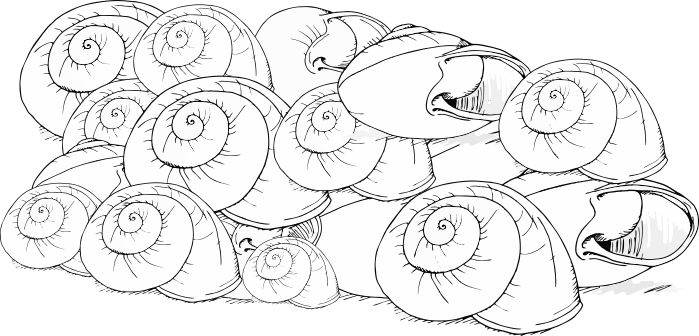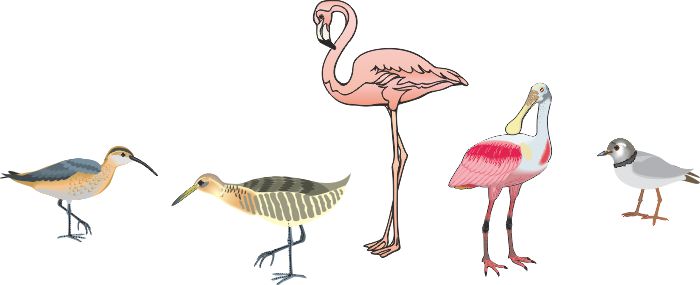
4. What number above represents the Whorl? _________
5. What number above represents the Aperture? _______________
6. What number above represents the Apex? _______________
7. What attribute that you measured showed the most variation? _____
8. What attribute that you measured showed the least variation? _____
9. What attribute that you measured had the greatest numercal range?

10. Would a small sample size (15) be as representative as a large sample such as 45?__________
11. When you set up your frequency table, how do you decide what attribute to use?
12. What is the difference between Mean, Mode and Median?
13. Which value (mean, mode, median) should you use to calculate your frequency intervals? ______________

In the natural world, birds such as these shore birds have to be adapted to water depth, background colors and feeding strategy. The feeding strategy is what you have been looking at in the laboratory.
To represent these different feeding strategies we used the following standins for the bird's beaks.

Straw, tweezer, pencils, sticks, clothes pin, and spoon
15. What was most important, beak shape or food selection?
16. How does natural selection controls the genetic diversity in the population?
17. Does evolution occur in individuals or populations?
18. Is there an advantage in having a phenotype in the middle of a range of phenotype variability?